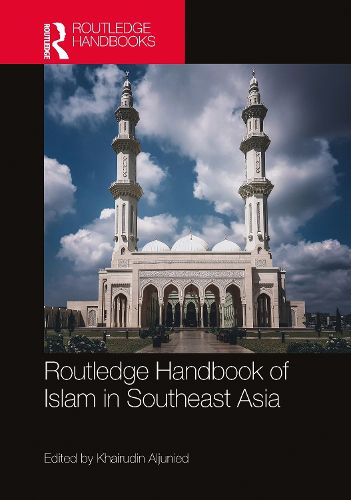Readings Newsletter
Become a Readings Member to make your shopping experience even easier.
Sign in or sign up for free!
You’re not far away from qualifying for FREE standard shipping within Australia
You’ve qualified for FREE standard shipping within Australia
The cart is loading…






This handbook explores the ways in which Islam, as one of the fastest growing religions, has become a global faith for both Muslims and non-Muslims in Southeast Asia with its universality, inclusivity, and shared features with other Islamic expressions and manifestations. It offers an up-to-date, wide-ranging, comprehensive, concise, and readable introduction to the field of Islam in Southeast Asia.
With specific themes of pertinent contemporary relevance, the contributions by experts in the field provide fresh insights into the roles of states, societies, scholars, social movements, political parties, economic institutions, sacred sites, and other forces that structured the faith over many centuries. The handbook is structured in three parts:
Muslim Global Circulations Marginal Narratives Refashioning Pieties
This handbook stands out as a single and synergistic reference work that explores the ebb and flow of Islam seeking to decenter many existing assumptions about it in Southeast Asia. It will be an indispensable resource for scholars, students, and policymakers working on Islam, Muslims, and their interactions with other communities in a plural setting.
$9.00 standard shipping within Australia
FREE standard shipping within Australia for orders over $100.00
Express & International shipping calculated at checkout
This handbook explores the ways in which Islam, as one of the fastest growing religions, has become a global faith for both Muslims and non-Muslims in Southeast Asia with its universality, inclusivity, and shared features with other Islamic expressions and manifestations. It offers an up-to-date, wide-ranging, comprehensive, concise, and readable introduction to the field of Islam in Southeast Asia.
With specific themes of pertinent contemporary relevance, the contributions by experts in the field provide fresh insights into the roles of states, societies, scholars, social movements, political parties, economic institutions, sacred sites, and other forces that structured the faith over many centuries. The handbook is structured in three parts:
Muslim Global Circulations Marginal Narratives Refashioning Pieties
This handbook stands out as a single and synergistic reference work that explores the ebb and flow of Islam seeking to decenter many existing assumptions about it in Southeast Asia. It will be an indispensable resource for scholars, students, and policymakers working on Islam, Muslims, and their interactions with other communities in a plural setting.